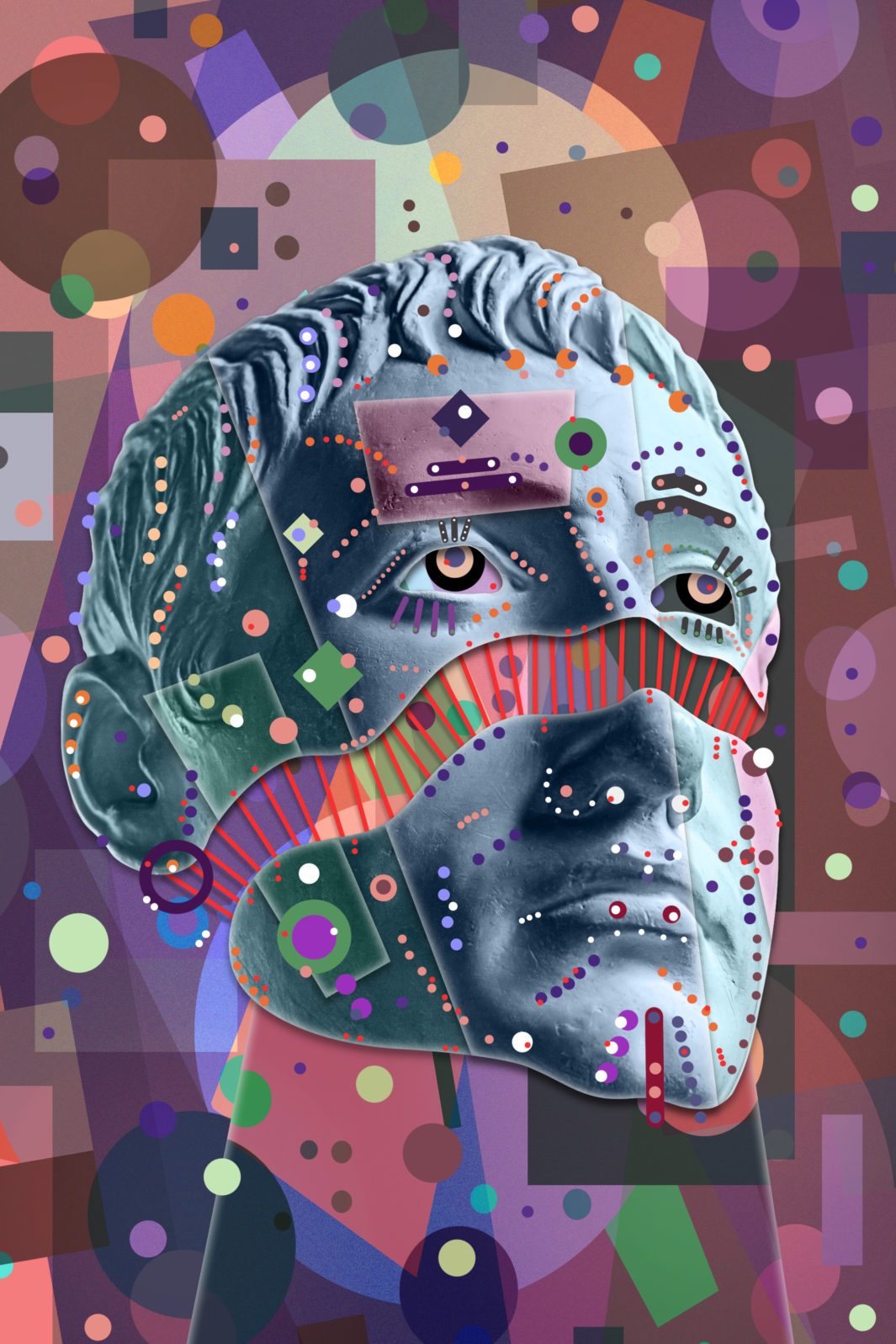Why Didn’t Decentralized Organizations Work in the Crypto World?
DAOs broke down when people tried to make them interact with the outside worldHere’s the second part of Episode 3 of the discussion between computer engineering prof Robert J. Marks and computer engineering grad students Adam Goad and Austin Egber on the wild new online world. They’ve been talking about non-fungible tokens (NFTs), and what sort of NFTs survived the crypto crater: Now, in the second part of “The NFT Anti-bubble” (August 18, 2022), they look at what happened to the decentralized autonomous organizations (DAOs) that grew up along with crypto and NFTs:
A partial transcript, notes, and Additional Resources follow.
Austin Egbert: Could you give an example of what one of these DAOs was maybe trying to do? What service were they providing? Or what was their business output, so to speak?
Adam Goad: One example of a DAO is decentralized applications, DAPPS, D-APP.
These are places where you can go and do more cryptocurrency or NFT trading, sales, whatever it is. A popular one is MakerDAO. You can invest your cryptocurrency and they will provide loans as one of the primary services. Those loans follow the directions of the algorithm. That algorithm is changed by the voting on the DAO. That is entirely encapsulated inside the Web3 universe. It will work there. It can be autonomous. It is all code. It does not have to interact with the outside world.
Where this breaks down is when people have tried to make them interact with the outside world. As soon as you get a human involved, that human can do something that the code is not telling it to do.
An example of this is the Helium Blockchain. Helium is an interesting concept in blockchain. It is a decentralized network that provides internet in the form of long range, called LoRaWAN. It is targeted at IoT devices — Internet of Things. You join by purchasing a transmitter. And then you set up this transmitter in your house. You plug it into your internet. That is how you mine on the Helium network. Instead of solving complicated cryptographic problems, you are just expanding the network. I actually have one of these miners set up in my apartment. It’s just a small little box that sits on a end table and makes me money. They’re looking at adding 5G service to it.

Robert J. Marks: Okay, what do you do again? This little box sits there and does what?
Adam Goad: Provides internet connection.
Austin Egbert: You have your home wireless router. It would basically be, if you were setting that up and you were offering service to anyone, but you got paid for offering that service, essentially. So somebody else would come along, they would pay a subscription to the network and that network would distribute that money back to you for operating a node on their network, essentially.
Adam Goad: Yes but it operates as a DAO. So whenever there are major decisions to be made, then it is put to a vote of everyone who owns the Helium tokens. And your voting power can be based off of how many tokens you own. A vote that came up recently was to add additional tokens to this chain. Instead of having just the main Helium token, it could be broken down into a 5G token, an internet of things token based off what kind of connection you were providing to the network. But this is not a pure example, because this is still run by Helium, the company. So even though the community has placed the votes on this, it is still on the humans of the company to enact what is voted on there.
Robert J. Marks: Wow. That is really, really strange stuff. Adam, you’ve told me that one of the problems with NFTs is that they are prone to corruption. Could you elaborate on that?
Adam Goad: Yes. While an NFT itself is cryptographically protected and cannot be taken from you without someone getting access to your private key, people can still trick you into buying things or authorizing them to do things on your behalf.
This is a common criticism of the Web 3 space, and NFTs in particular. There are innumerable scams out there because people knew that everyone was looking to get involved in this, particularly several months ago. And if they can get you to make a split second decision and buy something, then they have your money.
Austin Egbert: As an example of that, I guess, we mentioned before that you could buy and sell tickets. Would it be possible that I could go on and impersonate some organization selling tickets for an event. And I just sell fake tickets that don’t actually go to the event, but then still take advantage of people who are trying to attend if they come across my listing, instead of the authentic one? Is that the type of scam that can happen in this space?

Adam Goad: That is a very common type of scam. People pretending to be someone else. Most of the community for this space is run through an app called Discord. This is a common app. It was used originally for gamers, but has grown a lot larger. It provides the ability to talk with people all over the world through text, video, pictures, whatever.
Since these projects are pretty much all run through Discord, people attempt to impersonate someone on Discord. So if you can make it look like you are the owner of a project and you have just messaged this person saying, “Hey, we’re about to do something new and exciting, get in now,” that is a very common type of scam. And a lot of people have fallen for it.
Another one is what is known as a VGPL. They make it look like they’re setting up this project. It’s going to do great things. Perhaps they’ve even done a lot of the legwork. They’ve talked to other projects. They’ve gotten connections. And they’re promising to do something new, big and exciting. But then as soon as they have everyone’s money, they disappear.
Austin Egbert: Which is a common scam from the early days of [crowdfunder] Kickstarter. You can make up a great proposal. You can propose some fancy, sci-fi-sounding technology, like the folks who had projected computers built into a wristwatch, and you would aim at a screen or something. And you can make a flashy concept video that looks great and then get a whole bunch of people’s money. And you go to actually make it, and you find out, oh, there’s no way to integrate a high-fidelity projector with the brightness needed in a box the size of a couple dozen postage stamps stacked on top of each other…
Adam Goad: This is also what we talked about previously, starting businesses with NFTs. One project I saw was trying to build and mass produce a small, little holographic cube projector that you could use to display human NFTs in your house… they were looking for funding in order to mass produce them. And if you were to buy their NFT and give them money, they promise that they would send you one when they were done.
Robert J. Marks: So this is a different way for inventors to get money other than angel investors and such, right?
Adam Goad: Yes.
Austin Egbert: Now, this does bring up an interesting, almost philosophical, point on Web 3, NFTs and this whole decentralized versus centralized space. And that is kind of the question of, should we go after decentralization? We can talk about, oh, centralization has these various pitfalls. Large companies are able to aggregate your data and make decisions with that. But at the same time—
Robert J. Marks: And censor what you say. That’s my big beef.
Austin Egbert: Yes. And at the same time though, there are some benefits that are derived from that centralization. If I go on eBay and buy something from somebody and it never gets shipped to me, eBay will send me my money back. But if I just went on a decentralized platform and tried to execute some contract with somebody on Bitcoin or something, and I get scammed, I have no recourse, because there is no central authority to review that claim and try and reverse that.
Society’s just going to have to figure out in terms of, where is decentralization beneficial? And how can we overcome some of those pitfalls that come from that lack of regulation in the space?

Robert J. Marks: I think that this is just another manifestation of the risk-reward tradeoff. It seems to me that if you get more decentralization, you’re going to have more risk in terms of the fraud that you talked about. But establishing credibility, and establishing a reputation, and making sure you do due diligence are open to scrutiny. I can see that the decentralization would eventually work, except for very naive people. And you’re right. I think that there would be different things that would happen that would not be good.
But on the other hand, as I mentioned, I don’t like the censorship that we have all over the place, on Twitter and YouTube. And it would get rid of that sort of thing, hopefully.
So, final question, what do you see as Web 3… Web 3 is with us, whether we like it or not. And it’s going to be here, non-fungible tokens, blockchains, this decentralization sort of computer. Do you have any prophecies about what this is going to be in the short term or the long term?
Adam Goad: I think the hype is going to die down and it already is. But it is very difficult to tell what will remain. I am hopeful that we will see a greater decentralization of things, for many of the same reasons you just said. It prevents censorship. It provides individual power and freedom to the people.
Also, it enables a global community. There are a lot of people in Third World countries who have actually made a living and more by investing in Web 3, because it is available to them, unlike many other things. And they can get in for a very small amount of money and grow it very quickly. So I think it’s here. I think it’s here to stay.
Austin Egbert: In case you couldn’t tell, Adam tends to be more a pro-NFT, Web 3 hype man, compared to my Debbie Downer. I don’t see the point. I don’t know that this is going anywhere. I don’t think it’s going to disappear. But if it’s going to become more mainstream, there’s some user experience ease-of-use questions that are going to have to be tackled.
When you decentralize something, each interaction with it is a one-off thing that somebody has to learn. You can’t just go, “Oh, I know how this works with X service.” Y service is going to be completely different. And so when you have that decentralization, there’s a much steeper learning curve for anyone wanting to get involved in that space and having to figure out how each individual operator handles something, potentially.
With Web 2, we’ve had all of this centralization, this unification of experience. With Facebook, if I want to check up on my friend, Bill, I don’t have to track down where Bill is… If everyone’s on Facebook, you just go on Facebook, type their name in, and it’s easy to find no matter who you’re trying to track down.
When you go to decentralized platforms, you have to figure out, “Well, what platform do I even have to go to find the thing that I’m looking for?” And so there can be a complication in the space from that. And it eats into the ease of use of trying to interact with those platforms. So I think there’s those benefits from privacy and things, but it also can make some things more difficult to accomplish.
Robert J. Marks: The thing I’m interested in is whether Web 3 is going to disrupt large companies like Google, Amazon and Facebook, or whether it’s just going to be an augmentation of the technology we see. I suspect that the truth is going to be some combination of that. I think it’s going to augment, but also affect these different technologies. Okay, any final words?
Adam Goad: A lot of optimists in the space think that Web 3 will be the downfall of big tech, that the decentralization, the privacy aspects of it will disrupt their business model so much that they are not able to buy and sell personal information the way they do now.
I think that we are certainly a long way off from that, if we ever see it. But I think that this will be the next revolution on the internet. Just the same way that Web 2.0 brought around the big companies of today. It brought you Amazon, YouTube, Facebook, the rest. Web 3.0 will have similar ramifications on our society, but we’ll have to wait a few years to see exactly who comes out on top and what changes those will be.
Here’s the first part of Episode 1: Why don’t some tech moguls like Web3, the new internet? Web3 is a decentralized, less controlled version of the internet, as George Gilder predicted in Life After Google. However, some developers want to go further and make Web3 a virtual reality in which our avatars can live, as in the film Ready Player One.
And the second: What’s really happening with Bitcoin and other cryptos? How, for example, will miners make money when all the bitcoins have been mined? Robert J. Marks, Adam Goad, and Austin Egbert discuss what we hope is NOT the metaverse future, along with where Bitcoin and NFTs are headed.
Here’s the first part of Episode 2:
When you buy a non-fungible token (NFT), what do you own? You are buying someone’s digital idea. Just what legal rights that NFT confers is an open question. But the NBA is now selling them… Iconic images sweep the internet. With NFTs, a collector can say, I OWN that meme! Robert J. Marks and fellow engineers ponder what “own” means here.
You may also wish to read: How can non-fungible tokens (NFTs) be made to work better? Bernard Fickser offers twelve steps to handling NFTs in a way that dispenses with cryptocurrency-based blockchains and works in ordinary online marketplaces like eBay. In Fickser’s view, NFTs can work if they avoid self-serving cryptocurrency blockchains like Ethereum and enable real-world legal transfers of ownership.

And the second:
What gives NFTs (non-fungible tokens) their value? But first, a tour through the seamier side of the internet, supported in large part by the very blockchain that mints NFTs. If computer engineering prof Robert J. Marks wanted to market his cartoons as NFTs, what would he do? What would it cost? Adam Goad explains.
Here’s the first part of Episode 3:
Are NFTs a bubble that has just plain popped for good? Despite the crypto crash, they seem to be developing a life of their own — in ticket sales, for example. The NFTs that sell well now provide more than just “ownership” of an image, Adam Goad tells Robert Marks. They could be a marker of membership.
And the second:
Why didn’t decentralized organizations work in the crypto world? DAOs broke down when people tried to make them interact with the outside world. Adam Goad tells Dr. Robert Marks, as soon as you get a human involved, that human can do something that the code is not telling it to do.
Additional Resources
- Adam Goad at IEEE Xplore
- Dr. Austin Egbert at IEEE Xplore
- ”Just As Cryptocurrencies Went Mainstream — a Huge Collapse!” by Jonathan Bartlett at Mind Matters News
- Non-Computable You by Robert J. Marks at Amazon.com
- OpenSea NFT Marketplace
- MakerDAO
- Helium Blockchain
